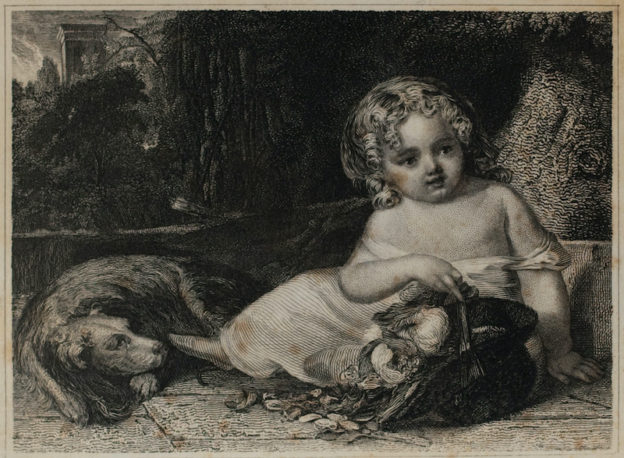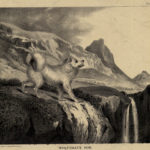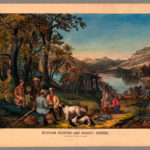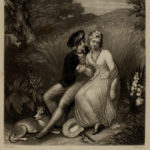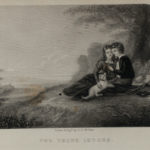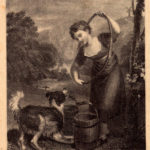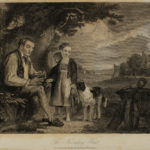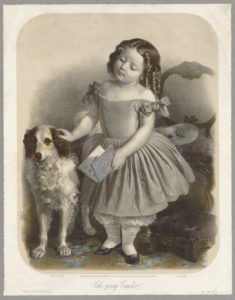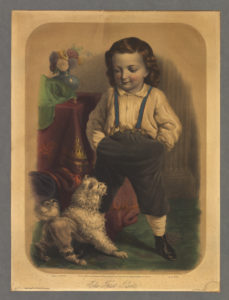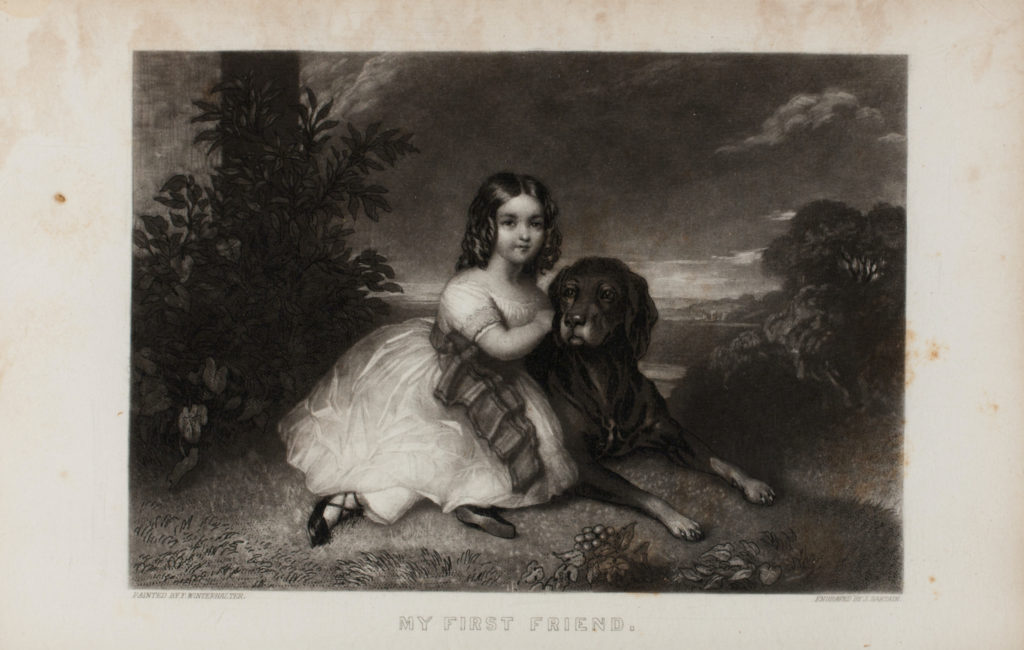It should come as no surprise that the staff here at the American Antiquarian Society is passionate about books and prints related to American history. But we’re also deeply committed to our pets. From time to time, we’ll even share photos of our favorite furry or feathered friends on the AAS Instagram page.
Today is National Dog Day! In honor of this special day, we thought we’d take a quick glimpse inside our collections to acknowledge the role our furry friends have played in our lives, both publicly and personally.
National Dog Day is just one of many unofficial holidays to spring up in the late twentieth century. Founded in 2004 by Animal Rescue Advocate and Conservationist Colleen Paige, this holiday celebrates our deep appreciation for our four-legged friends. Today it is recognized worldwide and not only celebrates all dogs but also encourages adoption.
In the twentieth century, dogs found new public roles and a new public status. In World War I, they were employed as sentries, trackers, and messengers, and, not soon after that, they were trained as assistance dogs to aid those with disabilities. With the rise of radio, film, and television, they also became celebrities. We only have to think of Toto from The Wizard of Oz, Rin-Tin-Tin, and Lassie. However, dogs were depicted to symbolize guidance, protection, loyalty, and love well before these popular characters reached American audiences. Although our relationships with household pets have certainly evolved since the founding of our nation, one sentiment remains true: Americans love their dogs.
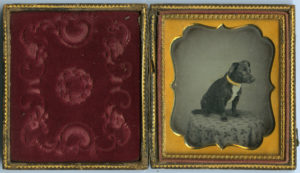 Although print media might first come to mind when imagining our collections, the American Antiquarian Society also holds a large photograph collection, which includes 219 daguerreotypes. Notable subjects for these portraits include Edgar Allan Poe, Clara Barton, and Dr. Samuel B. Woodward. The collection also includes rare views of San Francisco and Worcester and a number of unidentified portraits including this cute little one (above).
Although print media might first come to mind when imagining our collections, the American Antiquarian Society also holds a large photograph collection, which includes 219 daguerreotypes. Notable subjects for these portraits include Edgar Allan Poe, Clara Barton, and Dr. Samuel B. Woodward. The collection also includes rare views of San Francisco and Worcester and a number of unidentified portraits including this cute little one (above).
As we share selections from our catalog, we are reminded of the important part our dogs play in our lives, from observing our first president and nation’s founding to reminiscing about our first loves and first friends.
Our first president, George Washington, kept a large variety of dogs at his home at Mount Vernon from hunting dogs to working dogs to companion dogs. The American Kennel Club credits him as one of the people who helped develop the breed known as the American Foxhound. Washington’s writings reveal that he inspected the kennels each morning and evening, during which time he visited with the dogs.
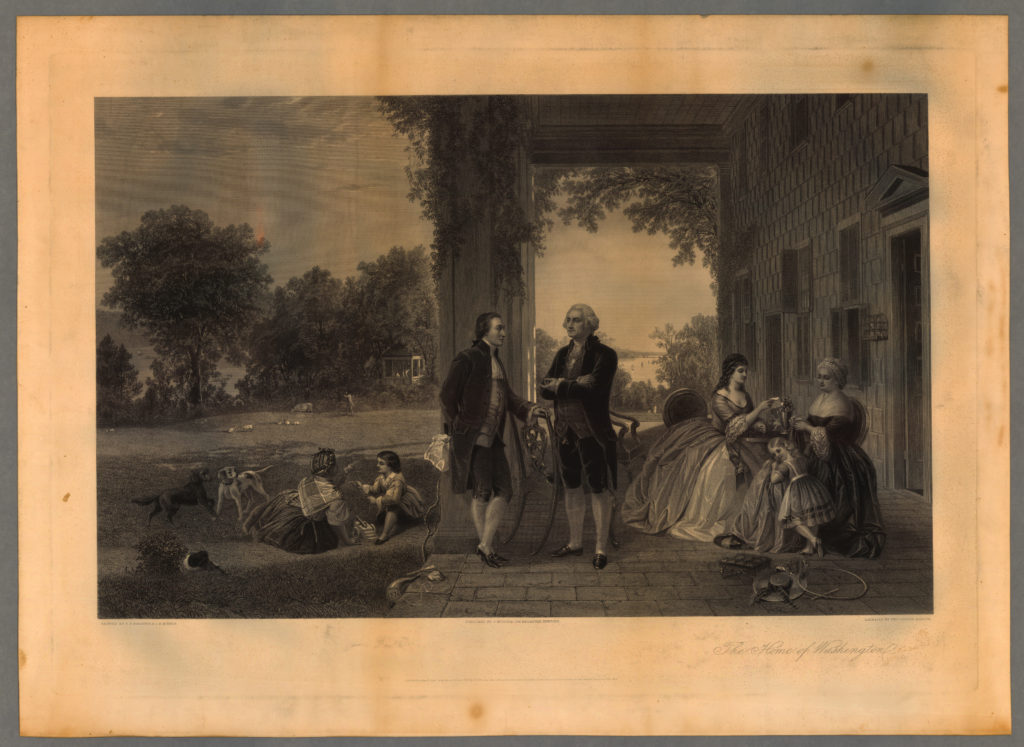 The Marquis de Lafayette sent Washington seven French hounds, so it might not be much of a surprise that several works depicting the two at Washington’s home also show dogs running around the grounds. The engraving (by Thos. Oldham Barlow) shown above is based on a painting from Thomas Prichard Rossiter. It portrays the Washington family, with Lafayette, on the front porch of Mount Vernon. If you look closely on the left, two French hounds play in garden.
The Marquis de Lafayette sent Washington seven French hounds, so it might not be much of a surprise that several works depicting the two at Washington’s home also show dogs running around the grounds. The engraving (by Thos. Oldham Barlow) shown above is based on a painting from Thomas Prichard Rossiter. It portrays the Washington family, with Lafayette, on the front porch of Mount Vernon. If you look closely on the left, two French hounds play in garden.
In another image, the lithograph (below)–published around 1875 by Fischer, Carpenter & Gusthal–depicts General Lafayette’s departure from Mount Vernon in 1784. In the foreground, on the piazza of Mount Vernon, George Washington and General Lafayette are shaking hands; one dog lies on the piazza, and another stands on the lawn looking back at the group.
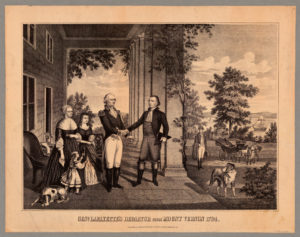 Nineteenth-century prints, portraits, and engravings trace Americans’ evolving relationships with dogs. Each and every happy hound and playful pup is fun discovery, and to follow these dogs from one print to the next is to follow the course of American history. Take a moment to explore some of the images in the AAS collections in the gallery below.
Nineteenth-century prints, portraits, and engravings trace Americans’ evolving relationships with dogs. Each and every happy hound and playful pup is fun discovery, and to follow these dogs from one print to the next is to follow the course of American history. Take a moment to explore some of the images in the AAS collections in the gallery below.
Among my personal favorites are two lithographs created by artist Jean-Baptiste Adolphe LaFosse (1814-1879). A student of Paul Delaroche, LaFosse was a French painter and lithographer whose most famous American subjects included former president Andrew Jackson and American attorney and statesman Henry Clay. LaFosse also created lithographs based on Charles G. Crehen’s Young ’76 (1855) and William Sidney Mount’s The Bone Player (1856).
AAS holds a number of LaFosse’s lithographs, including The Young Teacher (c. 1858) and The First Pants (c.1860). Both works are modeled after original paintings by Lilly Martin Spencer. Spencer sold a number of her genre paintings to print publisher Wilhelm Schaus, who commissioned these hand-colored reproductions and about a dozen others between 1853 and 1860. The girl and her furry friend (on the left) are models of innocence and respect; meanwhile, the boy on the right teases his puppy companion with something in his pockets.
These images offer but a glimpse of the visual doggy gems stored in our collections. Each reminds us that our national history is a personal one. By looking closely at some of these images portraying dogs, we are reminded of warmth and sweetness these animals bring into our lives.
We wish you a Happy National Dog Day!

